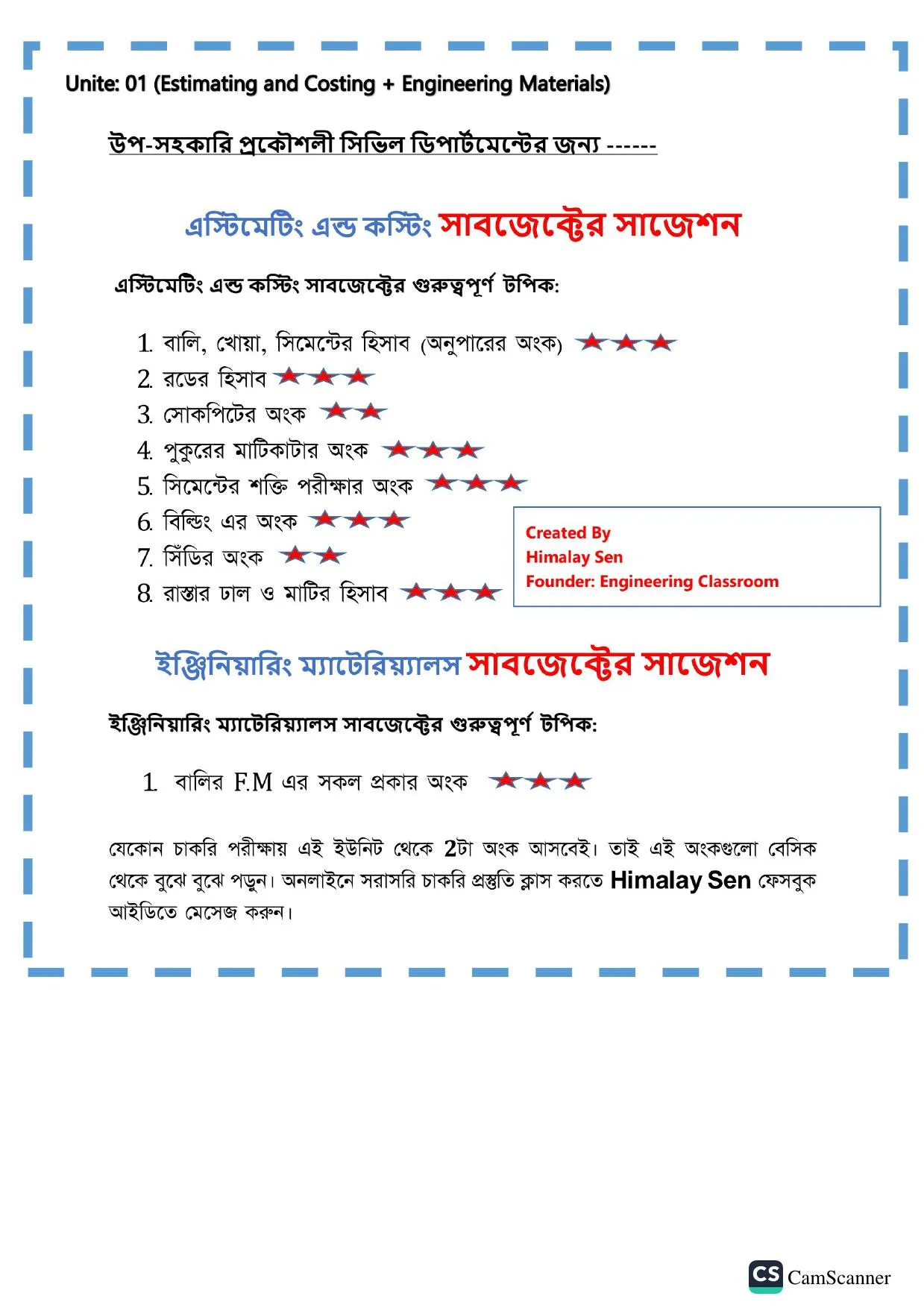MCQ
301. ইলেকট্রোড কত প্রকার?
২ প্রকার
৩ প্রকার
৪ প্রকার
৫ প্রকার
Himalay Sen Sir
মেকানিক্যাল ইঞ্জিনিয়ারিং MCQ
mechanical mcq
মেকানিক্যাল বিগত সালের প্রশ্ন সমাধান
advanced welding
ব্যাখ্যা: ইলেকট্রোডের শ্রেণিবিভাগ (Classification of Electrodes)। ইলেকট্রোডকে প্রধানত দুই ভাগে ভাগ করা যায়, যথা-
১। ক্ষয়িষ্ণু ইলেকট্রোড (Consumable electrodes)
২। অক্ষয়িষ্ণু ইলেকট্রোড (Non-consumable electrodes)
302. ওয়েল্ডিং-এ কী কী ত্রুটি দেখা দেয়?
ফাটল
বিকৃত
আন্ডার কাট
সবগুলো
303. গিয়ারের হোলে বুশ লাগানো কী ফিট?
রানিং
পুল
পুশ
ড্রাইভিং
304. রেগুলেটর - এর কাজ কী?
চাপ নিয়ন্ত্রণ করা
তাপমাত্রা পরিমাপ করা
তাপ কমানো
আয়তন কমানো
305. বেসিক সাইজ এর উপর ভিত্তি করে নিচের কোনটি নির্ধারিত হয়?
লিমিট
টলারেন্স
ক ও খ
ক্লিয়ারেন্স
306. ইলেকট্রোডের কোটিং-এ কোন উপাদান ব্যবহৃত হয়?
ক্যালসিয়াম
সেলুলোজ
কার্বনেট
সবগুলো
307. আর্ক ওয়েন্ডিং-এ ব্যবহৃত হয়-
অল্টাররেটিং কারেন্ট (উচ্চ ফ্রিকুয়েসি)
অল্টাররেটিং কারেন্ট (নিম্ন ফ্রিকুয়েন্সি)
ডাইরেক্ট কারেন্ট
উপরের সবগুলো
308. সঠিক পদ্ধতিতে ওয়েল্ডিংকৃত স্থান মূল ধাতুর চেয়ে কেমন হয়?
দূর্বল
শক্ত
মোটামুটি
সবগুলো
309. ওয়েল্ডিং জোড়া সাধারণত কত প্রকার?
২ প্রকার
৩ প্রকার
৪ প্রকার
৫ প্রকার
310. কোনটি আর্ক ওয়েল্ডিং-এ ব্যবহৃত যন্ত্রপাতি নয়?
ইলেকট্রোড
ইলেকট্রোড হোল্ডার
রাইজার
কোনোটিই নয়
Himalay Sen Sir
মেকানিক্যাল ইঞ্জিনিয়ারিং MCQ
mechanical mcq
মেকানিক্যাল বিগত সালের প্রশ্ন সমাধান
advanced welding
ব্যাখ্যা: আর্ক রভেন্ডিং - এর সময় নিম্নলিখিত সরঞ্জামগুলো দরকার-
১। বৈদ্যুতিক উৎস (এসি বা ডিসি) (Source of current AC or DC)
২ । পরিবাহী তার বা ক্যাবল (Welding cable)
৩। ইলেকট্রোড (Electrode)
৪ । ইলেকট্রোড হোন্ডার (Electrode holder)
৫। হেলমেট ও হ্যান্ড শিশু (Helmet and hand shield)
৬। ওয়েন্ডিং জিগ (Welding cig
311. নিচের কোনটি ওয়ার্কিং গেজ ?
প্লাগ গেজ
ডেপথ গেজ
স্ল্যাগ লেজ
স্লিপ গেজ
312. মাল্টি প্রসেস/মাল্টি পজিশনিং ওয়েল্ডিং পদ্ধতি কোনটি?
Seam
Soldering
Projection
কোনোটিই নয়
313. ইলেকট্রোড আয়রনের কোন উপাদানটি ওয়েন্ডিং জোনের উপর গ্যাসীয় আবরণ তৈরি করে?
সেলুলোজ
এসবেস্টস
ক্যালসিয়াম অক্সাইড
কাঠের গুঁড়া
314. ল্যাপ জয়েন্ট করা হয় …..পুরুত্বের প্লেটে।
3mm-এর ছোট
(5-10)mm-এর বড়
12.5 mm-এর বড়
25 mm-এর বড়
315. রিভার্স পোলারিটিতে জবের সাথে জেনারেটরের কোন প্রাত সংযুক্ত থাকে?
পজিটিভ
নেগেটিভ
নো-কানেকশন
উভয় প্রান্ত
316. অপারেশনের সময় কোন গেজের মাধ্যমে পরীক্ষা করা হয়?
ওয়ার্কিং গেজ
মাস্টার গেজ
পরিদর্শন গেজ
কোনোটিই নয়
317. কোনটি ফিউশন ওয়েল্ডিং নয়?
আর্ক ওয়েন্ডিং
ঘর্ষণ ওয়েল্ডিং
থারমিট ওয়েল্ডিং
ব্রেজ ওয়েল্ডিং
318. ফ্লার কী?
বিদ্যুৎ প্রবাহ ঠিক করা
অক্সাইড অপসারণ করে
সহজে গরম হয়
অক্সিজেন দূর করা
Himalay Sen Sir
মেকানিক্যাল ইঞ্জিনিয়ারিং MCQ
mechanical mcq
মেকানিক্যাল বিগত সালের প্রশ্ন সমাধান
advanced welding
ব্যাখ্যা: ফ্লাজ একটি রাসায়নিক ধাতু মিশ্র যা গ্যাস ওয়েল্ডিং করার সময়। ধাতু কে অক্সিজেনে সাথে মিশ্রণ ক্রিয়া (Oxidation) এবং অন্যান্য আনাকাঙ্কিত রাসায়নিক বিক্রিয়া প্রতিরোধে সাহায্য করে।
ফ্লাক্সের কাজ-
১। অক্সিডেশন হতে জোড়ত্বানকে রক্ষা করে।
২ । সৃষ্টি অক্সাইড দূর করে।
৩ । অন্যান্য অপদ্রব্য পাব্দ (Stag) হিসেবে দূর করে।
৪ । শক্তিশালী ও অধিকত্বর নমনীয় জোড় তৈরিতে সাহায্য করে।
319. যে ওয়েল্ডিং প্রক্রিয়ায় চাপ ও তাপ প্রয়োগে ওয়েল্ডিং করা হয় তাকে-- বলে।
ফিউশন ওয়েল্ডিং
নন-ফিউশন ওয়েল্ডিং,
কোনোটিই নয়
320. ইলেট্রোডের দৈর্ঘ্য সাধারণত কত হয়ে থাকে?
১০"-১৫"
১২"-১৮"
১২"-১৬"
১২"-২২"















